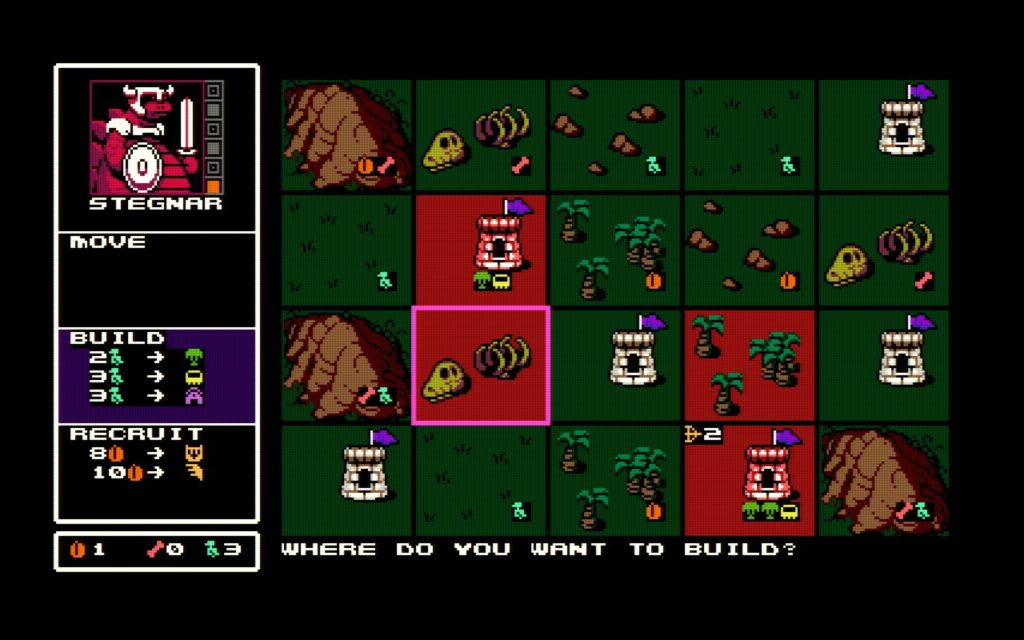UFO 50 Thoughts: Round 1
UFO 50 is a compilation game with a “found collection” aesthetic. Although it’s not quite exactly NES in terms of capabilities/music, it’s close. Most games have some indie sensibilities, so it doesn’t feel exactly like a found collection, but more along the lines of “what your nostalgia told you games were like”. I’ve enjoyed playing it over the past few months, and although I don’t feel I’ve given every game a fair shake, I’m down to about 5 or so that I want to dig into deeper. Each game has multiple different completion options: Item (typically an hour or two into the game), Gold (think of as “beaten”), Cherry (completed a “challenge”).
I wanted to write up some quick (or not quick, in the case of Avianos) impressions to give some idea of the flavor of games in the collection I felt particularly stand out. Since there are so many of them, and this order represents the (roughly, as it’s from memory) chronological order, I decided to split this post into several to keep things straight.
Barbuta: This is an opaque adventure game that feels like it would’ve been at home on the NES (though possibly without the multiple-lives mechanic, or the map). It’s kind of metroidvania-esque, in that you find items that let you progress past very specific obstacles. I felt it ran a little too slow to be entertaining, but I could see a version of me that is more eager to make maps and enjoyed it.
Bug Hunter: A puzzle game that feels a little bit roguelike – each round, you choose from actions that you can purchase/overwrite at any time, which means you can often take several “extra actions” by overwriting already used ones. It felt a little too hard for me even in the early stages. Due to the difficulty, even though the grid and action systems seem like they would be interesting I couldn’t stick with it for long.
Velgress: An onward-and-upward roguelike (in the more classic start-all-over sense) platformer, while it does not appeal as much to me as other early games in UFO 50 did, its quick play-time and ease of restarting make it perfect if you want to play something really bite-sized.
Mortol: A weird blend of platformer and puzzle, it’s perhaps most reminiscent of Lemmings – in the sense that each individual character is expendable – but it also does a great job of making the player regret unnecessary deaths. Any of three sacrificial actions – bomb, arrow, statue – can be used to help navigate the platforming stages (using your former comrades as stepping stones to reach the end). But at the same time, a fair bit of the game is standard platforming and doing it well might save lives. Each relatively short stage can be replayed, and the overall “campaign” updates with the best result so far so that you can be in the 5th stage and go back and fix your stage-1 performance to get more lives.
Avianos: While it’s presented as a strategy game, it plays more like a board game. The numbers involved rarely get high. It may start out confusing, but once you get the hang of it Avianos isn’t that complicated.
Each turn, you pick a dinosaur to worship. That dino determines what three actions are available to you (recruitment, movement, spells, building, etc). You can’t pick the same one two turns in a row, and you can’t pick the same one your opponent does. The wrinkle that makes things more interesting is that each dino also has a power meter that increments each time you pick it. Every other increment lets you power-up one of those three actions to improve it – for example, recruitment gets cheaper or new units get unlocked. Movement can be diagonal or cause surprise attacks. This offers additional strategic options: you can pick short-term gains or long-term ones, observe which dino your opponent picks most often and deliberately block them, etc.
When you invade an enemy square, the units face off in an auto-attack (with overall commands such as attack, hold, flee, raze [destroy buildings]) fashion – simple, but interesting.
I’ve mostly played Avianos in single player, where most of the strategy is in figuring out what kinds of mistakes the AI makes. In single player, Avianos hides most information beyond which dino the CPU picks (with a spell to spy on individual squares). It also has a two-player mode, with tweaks to make it a full-visibility game.
Waldorf’s Journey: On the surface, Waldorf’s Journey is a simple platformer about a dreaming walrus. You jump from surface to surface with the ability to “flap” to adjust your landing. Under the surface… it’s still that, really. It’s a charming, uncomplicated game that nevertheless spices things up as you encounter weather, enemies that charge you, item shops where you can buy things to help, and so on.
Waldorf’s Journey also benefits from a frantic multiplayer mode. In a randomly generated stage, players compete to be the last walrus standing (either by bumping their opponent off the stage, or, more likely, by not biffing a risky jump to bump their opponent).

